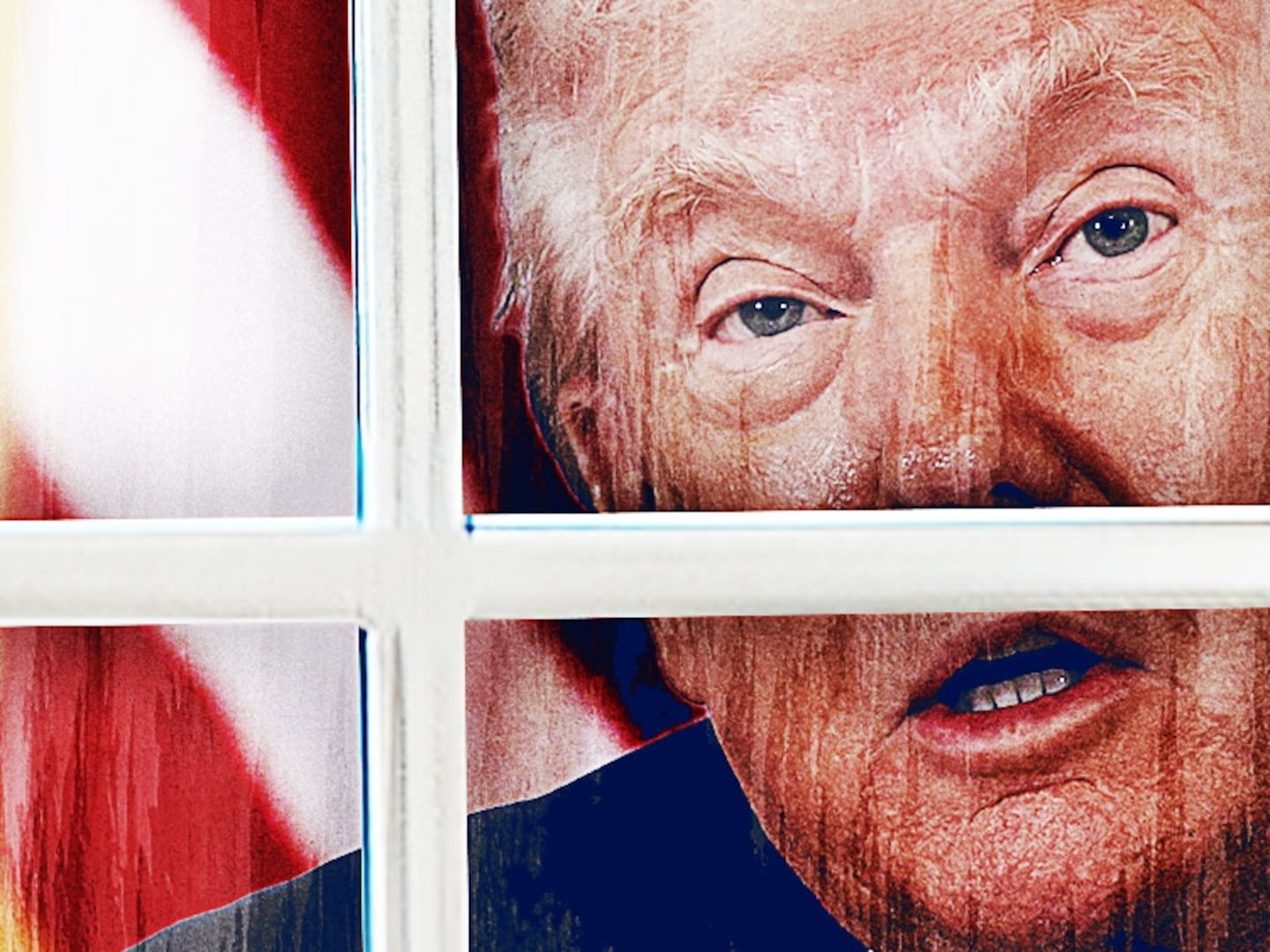In November 2011, Barack Obama told the Australian parliament that the United States was embarking on a major shift in its foreign policy—with a pivot to Asia. “After a decade in which we fought two wars that cost us dearly, in blood and treasure,” he said, “the United States is turning our attention to the vast potential of the Asia Pacific region.”

In the intervening months, this Asia pivot has been greeted with increasing skepticism, and for good reason. The last time America pivoted to Asia was on December 7, 1941, when Japan attacked the U.S. fleet at Pearl Harbor. That pivot lasted a single day, until December 8, when Germany declared war on America. Within hours, President Franklin Roosevelt made America’s war strategy clear: the U.S. would ship most of its resources to Europe to defeat “Germany first.” Asia, and the defeat of Japan, would come second.
The historical analogy is apt. Obama was forced to reschedule his first trip to Asia because of a government shutdown, while his second trip, in November 2009, was eclipsed by an Israeli offensive in Gaza. As Obama was gazing at Bangkok’s “Reclining Buddha,” American headlines were focused on the crisis in the Middle East. Obama had no better luck in 2010, when his 10-day Asia tour was overshadowed by the just concluded U.S. midterm elections, or just last year, when another government shutdown forced the president to send Secretary of State John Kerry to a Asia-Pacific Economic Cooperation summit that Obama couldn’t attend.
So too, Obama finds himself in the same situation now; while the White House plies reporters with details on the president’s meetings with Asian leaders during his current four nation trip to the region, those same reporters are wondering how he will respond to the continuing crisis in the Ukraine—which is in, ah, Europe. Or, as one reporter noted this week: “Not only has Russian President Vladimir Putin’s land grab riveted everyone’s attention, it also threatens to upend the whole concept of the pivot, at least for a while.”
So, while the president says he is “going all in” for “the Asian century,” events are conspiring to pull America back into Europe, just as they did in 1941.
A part of the challenge facing Obama is that, despite the enormous growth of Asian economies and the rise of China as a world power, Americans (and American institutions), remain decidedly “Euro-centric”—there’s “the West” and then there’s “the rest.” Nowhere is this view more apparent than in the U.S. military. While senior military officers, including Martin Dempsey, chairman of the Joint Chiefs of Staff, have taken a number of high profile trips to Asia and pledged their support of Obama’s Asia “pivot,” most senior military officers have spent their careers planning and training for a confrontation with the Soviet Union—in Europe—or against Iran, in the Middle East. And when they weren’t doing that they were fighting wars in the Middle East (in Operations Desert Storm in 1991 and Iraqi Freedom, in 2003), or in Southwest Europe, during the break-up of the former Yugoslavia, in 1999.
This is true even for the Navy, which considers the Pacific a “Navy lake”—where it can most easily project its power and where, it believes, the U.S. Army will play a secondary role. But the Navy is also surprisingly “Euro-centric.” Its Sixth Fleet spent the Cold War planning to battle the Soviet Navy and it has played a signal role in every major American conflict in the Middle East. Operation Iraqi Freedom’s “shock and awe” strategy began with a barrage of Tomahawk missiles launched from U.S. vessels in the Persian Gulf. More crucially, the Navy conducted a highly successful, if low profile, conflict against Iran during Operation Earnest Will in 1987 and 1988. The commander of that operation was General Joseph Hoar, a Marine officer—that is, a service that is a part of the Navy.
In one sense, it’s understandable why the U.S. military is “Euro-centric.” In conducting research for The Most Dangerous Man In America, my biography of General Douglas MacArthur that highlights his relationship with Franklin Roosevelt, the military’s European mindset, its prejudice, was an ever present reality. While Roosevelt’s “Germany first” strategy made sense, it also reflected a common military belief that Japan could be more easily defeated. Cartoons at the time showed the Germans as supermen, while the Japanese were depicted as monkeys, swinging from tree to tree as they made their way towards the conquest of Singapore. After Japan’s initial attack on Pearl Harbor and the Philippines, a number of MacArthur’s officers believed that Japan’s fighter aircraft had been flown by Germans because, as they explained, “everyone knows that Asians” can’t handle complex machinery.
While these historical moments are anecdotal, they’re more than just symbolic. In North Africa, after the Germans whipped the Americans at the Battle of Kasserine Pass, Eisenhower told his subordinates that one of the problems he faced was that his soldiers “didn’t hate the Germans enough.” It was an astonishing, if accurate claim—though one that wasn’t true for the Pacific, where MacArthur’s soldiers had little problem killing Japanese soldiers—because they despised them. Then too, at the end of the war, Army Chief of Staff George Marshall recommended to MacArthur that he appoint commanders who had served in Europe to head up the invasion of Japan, and not simply because he trusted them. They had faced the Germans and so were therefore, presumably, better officers.
The “Euro-centrism” reflected in our views of World War II carried over into the Cold War. While the Army, Air Force (a part of the Army in World War II), and Navy had built a cadre of top flight combat officers during the Pacific campaigns, few of them were named to head up the military when the war ended. The first Army officer who’d served in the Pacific to be named the Army’s Chief of Staff was George Decker, who was named to his post in 1960, 15 years after Japan’s surrender. Americans might recognize the great captains of World War II, a list that would assuredly start with Dwight Eisenhower—but would be hard-pressed to name the victor in New Guinea (General Robert Eichelberger) or the liberator of Manila—General Walter Krueger.
MacArthur, who was relieved of his command by President Harry Truman during the Korean war, remains one of our nation’s most controversial military commanders. But what he had to say about the lessons he learned in fighting in Asia have a direct bearing on how the military shapes its support of Obama’s Asia pivot. They should be listened to.
“Never get involved in a land war in Asia” is MacArthur’s most oft-quoted adage. In fact, MacArthur believed that one of the reasons the U.S. was able to defeat Japan was because the Japanese had become mired in a land war in China—which siphoned off millions of troops in a conflict that could not be won, and which might have been thrown against the Americans.
But MacArthur’s adage had a deeper meaning.
By the end of the Pacific war, MacArthur was wedded to the principle of a U.S. military that was amphibious, airborne, and highly mobile, a significant revolution in thinking for a man who had fought in the trenches in World War I. A new convert to the concept of combined operations, MacArthur’s “Reduction of Rabaul”—the massive Japanese fortress in the Southwest Pacific—was the first instance in military history of a combined arms operation, a military campaign that depended for its success on all the services acting in unison. Under MacArthur’s vision even the Army was amphibious. Operation Cartwheel, as it was known at the time, predated the Goldwater-Nichols Act of 1986 (which forced inter-service cooperation and mandated combined and coordinated training of all the service branches) by four decades.
Ironically, for he spent a good deal of World War II fighting with the Navy over manpower and resources, MacArthur told George Marshall following the war that he believed that inter-service competition was the chief obstacle to an earlier American victory over Japan. He was reflecting reality: his soldiers were borne onto Pacific beaches by the Navy’s amphibious arm, protected by the offshore fire of the Navy’s ships, and defended by Army Air Force fighters.
Controversial though he might be, MacArthur’s experiences in World War II might provide a useful model for shaping the military’s reaction to Barack Obama’s pivot. While Obama’s strategic rebalancing is fueled by his belief that America’s economic future will be tied to Asia’s economic growth, he’s tied that growth to longstanding American principles of free trade—and free navigation. He envisions an Asia “where,” as he told the Australian parliament, “commerce and freedom of navigation are not impeded.” That message, it seems clear, was aimed at China, which is engaged in a series of contentious arguments with its neighbors (all of whom are American allies) over maritime rights.
But Obama’s message should also be heard by the U.S. military which, in pivoting away from Europe—where American firepower can be used most effectively—must pivot towards an area of operations where being light and mobile provides the best path to victory. This will be a challenge, particularly for a “Euro-centric” military that has yet to fully realize the transformation envisioned in the Goldwater-Nichols Act, and has yet to shape a military establishment that is more amphibious, airborne, and mobile.
Mark Perry’s most recent book, The Most Dangerous Man In America (The Making Of Douglas MacArthur) has just been released. Follow him @markperrydc






